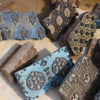GANDHI KA GHAR – SEVAGRAM
The responsibility of becoming a father is one of the biggest ones in the entire existence of humans. Imagine the responsibility of being conferred upon with the duty of over a billion children. One really has to have an extraordinary persona in order to justice to the title ‘The Father of the Nation’. On this Gandhi Jayanti, remembering the exemplary figure for millions around the globe is rightly called for.
We all come across the philosophies of Mohandas Karamchand Gandhi at some point or the other in our lives. To be a pioneer in freeing not one, but two countries from the shackles of oppression and cruelty is no small feat. The weapons of truth and non-violence were too strong for the largest colonial power to cope up against.
A lot can be said about a man from the place where he hangs his hat. Home is a place we all draw strength from to tackle another day of the endless scuffle that is life. While we all know about the great struggles Gandhi made, we have very less knowledge about how he went about his day-to-day chores. Team Vritti was at Sevagram – The place which was called home by one of the greatest individuals to have walked on the pious soil of this country. Let us take a peek into the life of the Mahatma.
THE ORIGIN:
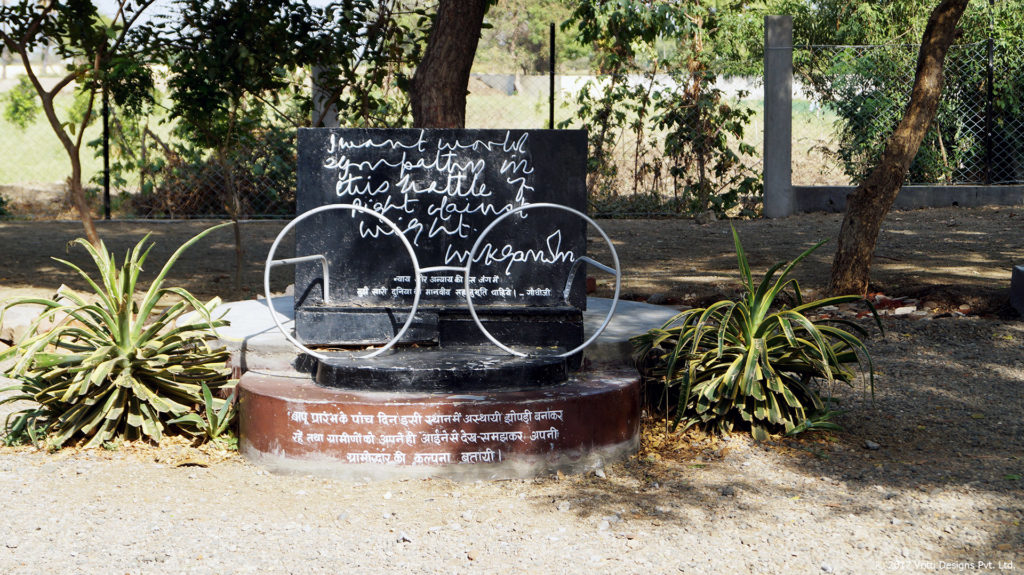
Shegaon was a typical miniscule Indian village. However, it was destined to greatness as Mahatma Gandhi decided to take residence at this humble village. It was a place which served his pledge of not returning to Sabarmati Ashram until India attains independence.
Shegaon was baptized by the Mahatma as Sevagram, meaning “a village for service”. This is not at all unusual for the man who devoted his entire life rigorously to the causes of the country. It was supposed to be a small place of residence just for Bapu and Ba (Kasturba Gandhi) to reside at. But the great amount of responsibilities on Bapu’s shoulders required him to have colleagues by his side and slowly, Sevagram turned into a full-fledged institution.
THE FIRST SIGHT:
The ashram is a symbol of serenity and peace. It completely reflects what the Mahatma stood for. The visitors are equally welcomed and warned about the rules on which the entire place stands. These are the life practices preached and practiced by Bapu and his ardent followers. Truth and Non-violence are at the top of this list. These were the pillars on which the personality that Gandhi was, stood. These are followed by some minimalism-inducing principles Vritti is built on including non-possession, non-stealing, bread labor and swadeshi.
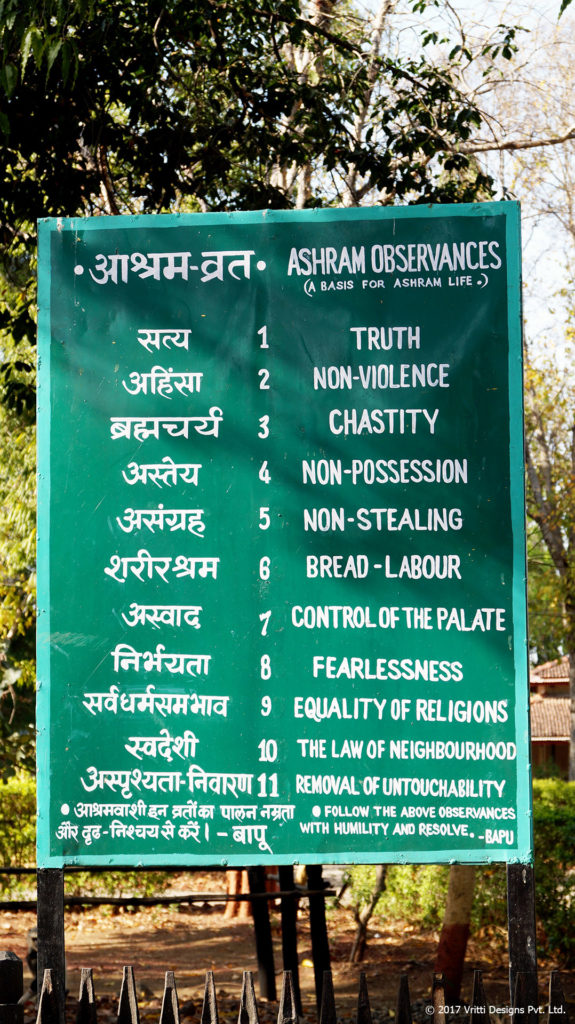
Gandhi ji staunchly believed in Chastity and thus there was a separate kuti (hut) for Ba at Sevagram. Promoting equality, he strictly saw that there is no discrimination on the basis of religion and saw to the abolishment of untouchability. And above all, fearlessness was the quality which was inculcated in all followers of Bapu. He had the path of non-violence. And while many think it is the path of cowards, in reality it is the path which demands most courage.
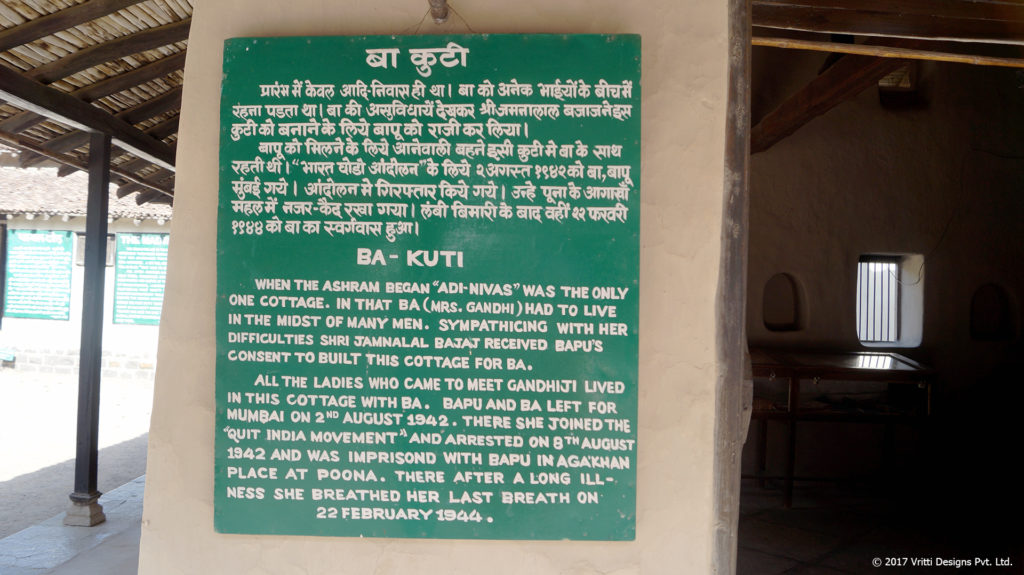
The Mahatma was a man way ahead of his time. While we struggle to save and harvest water, he had a well-built system for the purpose of rainwater harvesting. One can also see the tree under which he took his daily sunbath. Even in those times, he knew the importance that the elements of nature hold in the life of every human. This proves that living in an ashram is no excuse to not be in touch with the scientific side of life.
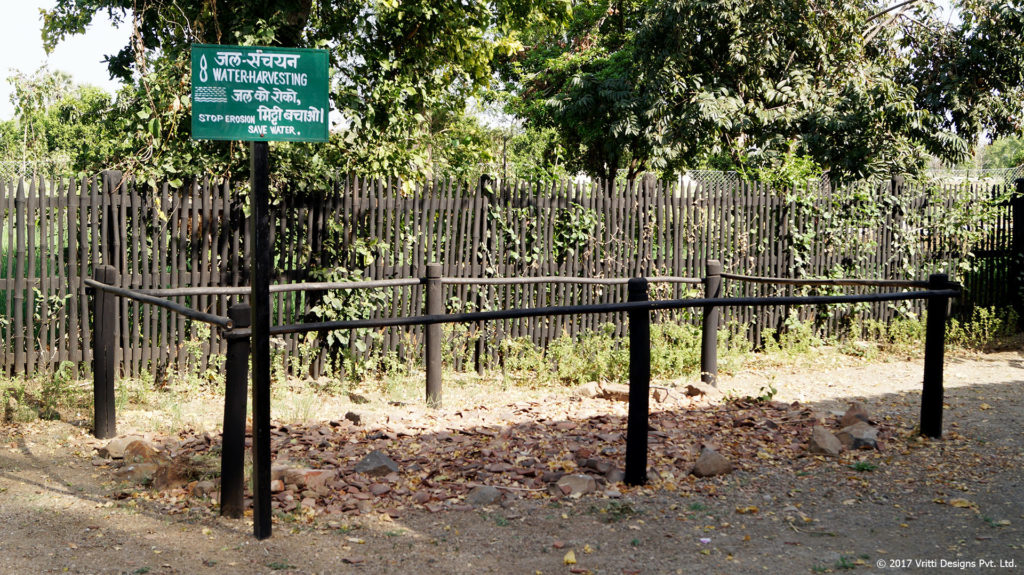
BAPU KUTI:
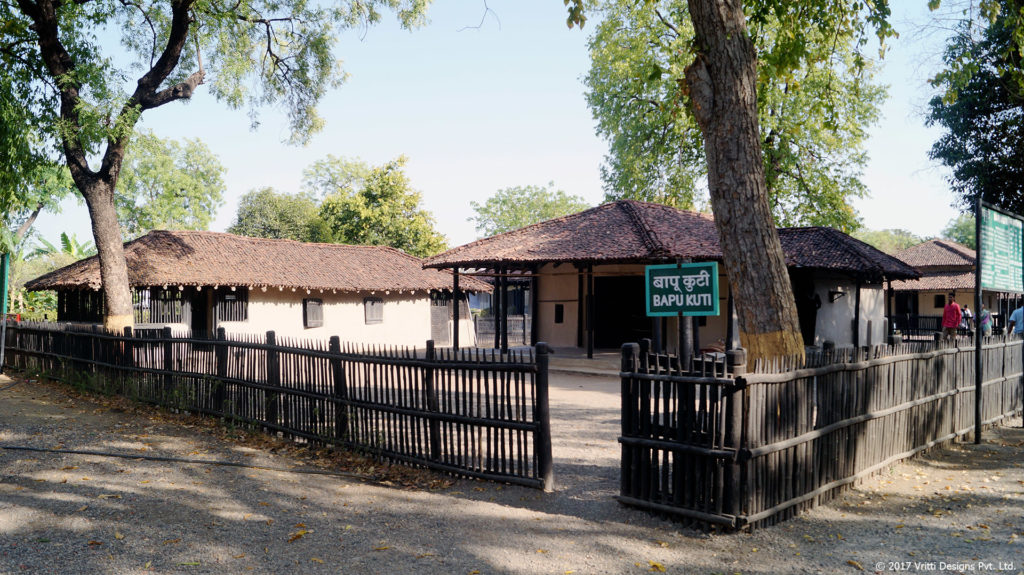
The Adi Nivas (The First Hut) was the first place where Bapu lived along with his followers. However, as it grew more and more crowded, Mahatma shifted to the Bapu Kuti. The cottage has been till date preserved to be the exact same way as it was during Gandhi ji’s time. Inside the Bapu Kuti, one can see the place where Bapu used to sit and go about his daily tasks. It was just a cotton gadda (mattress) spread on the ground.
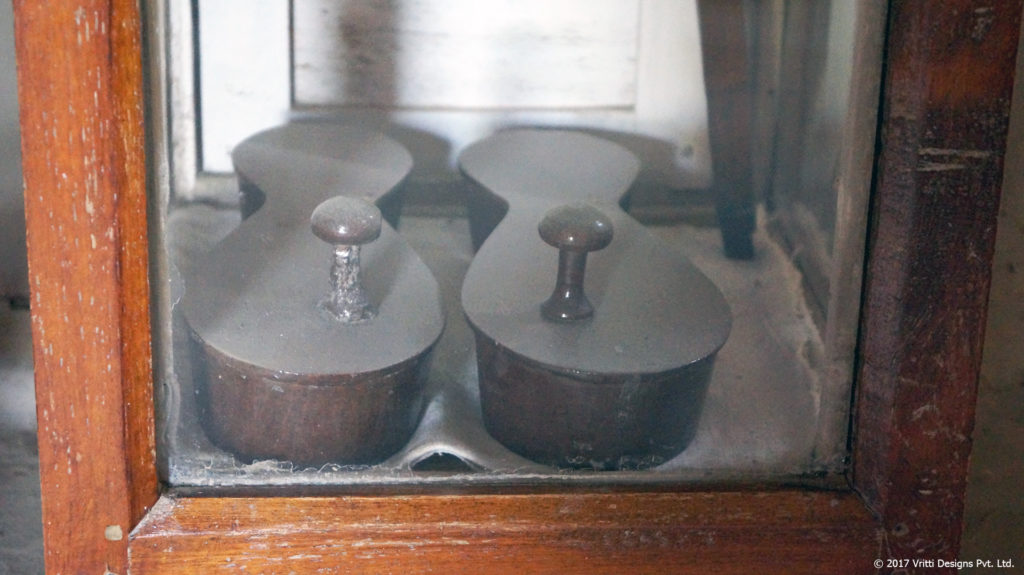
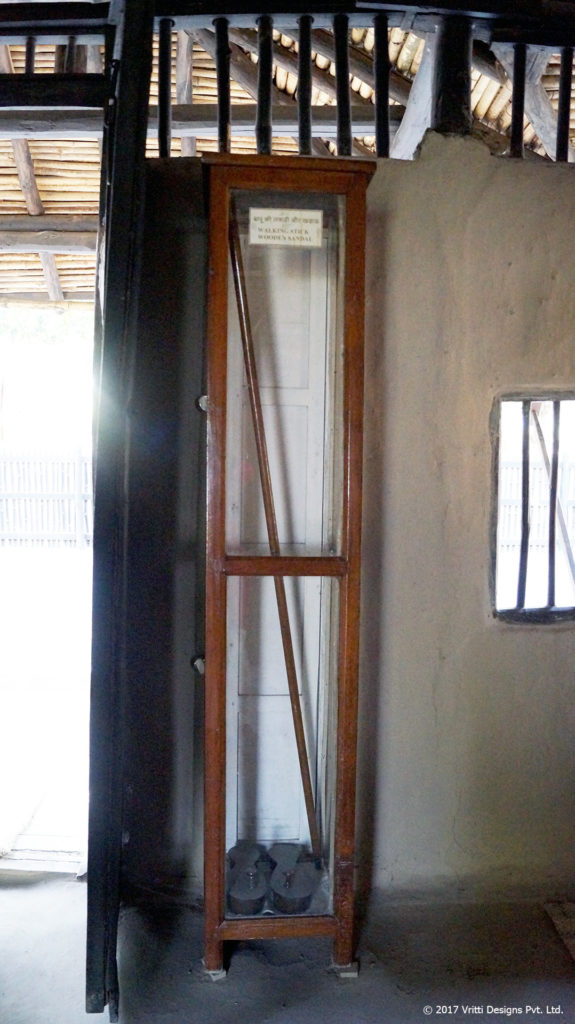
The kuti also houses Gandhi ji’s accessories. His padukas (sandals) and walking stick are some of the exemplary things which are linked to him even today. They literally make the presence of Gandhi felt. Besides them, an entire list of day-to-day items can be seen in the picture below. These were the only items ever owned by Bapu – an excellent testimony to the preaching of minimalism and non-possession.
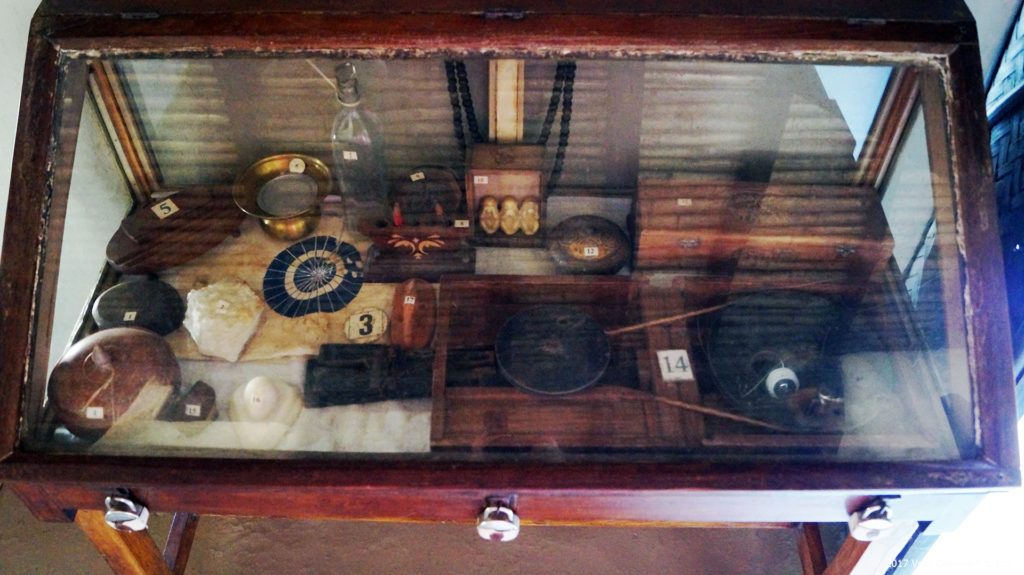
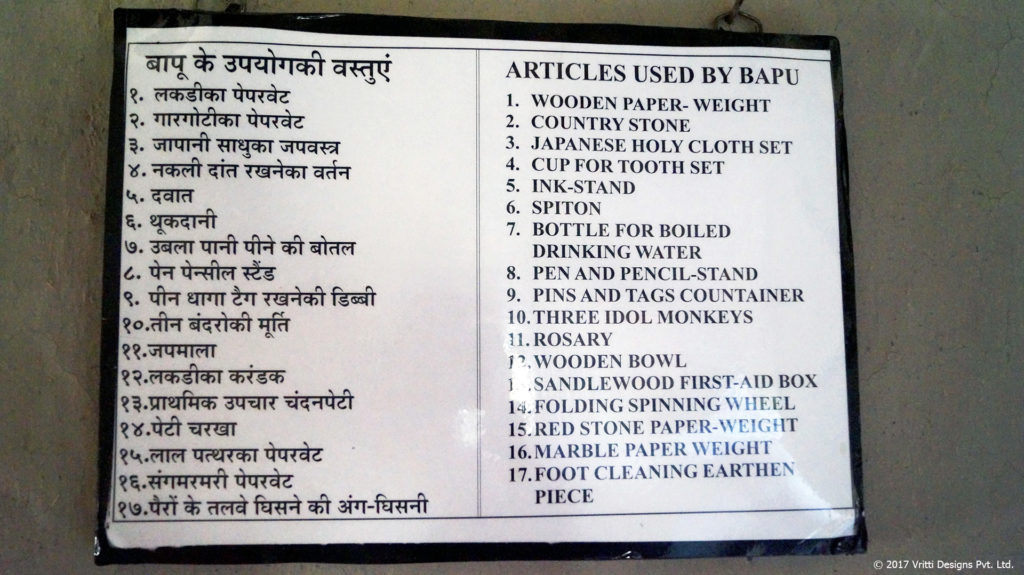
One can also witness Bapu’s collection of clothes. These clothes were crafted by himself from the raw material of cotton. He was of the habit of spinning his own yarn and sewing his own clothes out of raw cotton. All his clothes were of pure handloom. This practice of cloth making ensured that the farmers of cotton earned a living and also embossed the value of swadeshi in the minds of all. The above reasons are enough for Vritti Designs to consider the Mahatma as their very own Brand Ambassador.
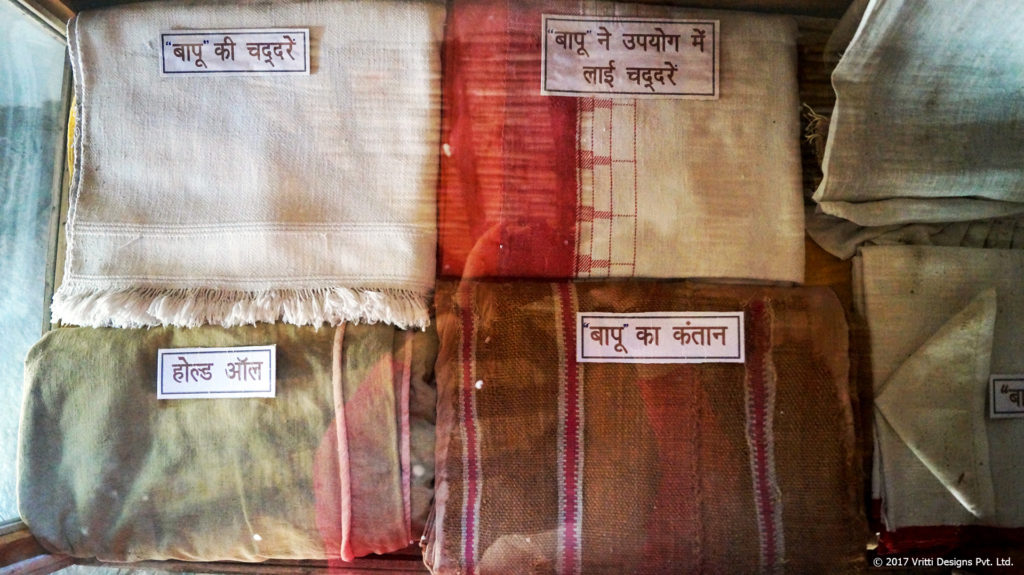
Apart from being the Mahatma’s residence, the cottage also served as a cradle to innumerable ideas and movements to free India from tyranny. Thus, this is one of the most prominent monuments of Indian freedom struggle.
THE KITCHEN CRITERIA:
The kitchen serves only organically grown food till date. While the metropolitans have been taken on by the organic wave very recently, Bapu always knew the significance of organic things in life. The utensils used in the kitchen are also made up of only traditional metals like copper and brass while some are made up of clay. No aluminum utensil is to be seen anywhere in the ashram.
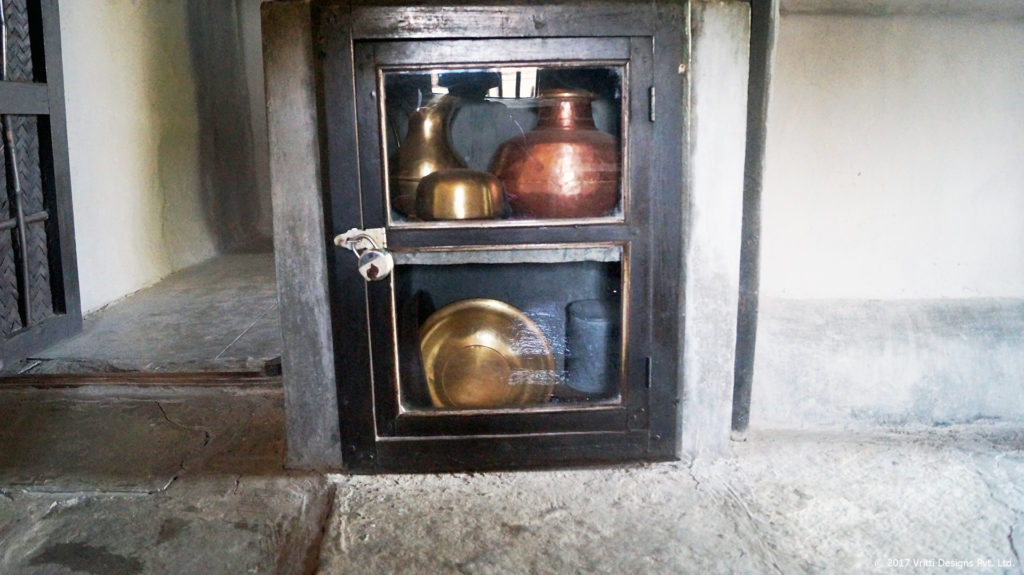
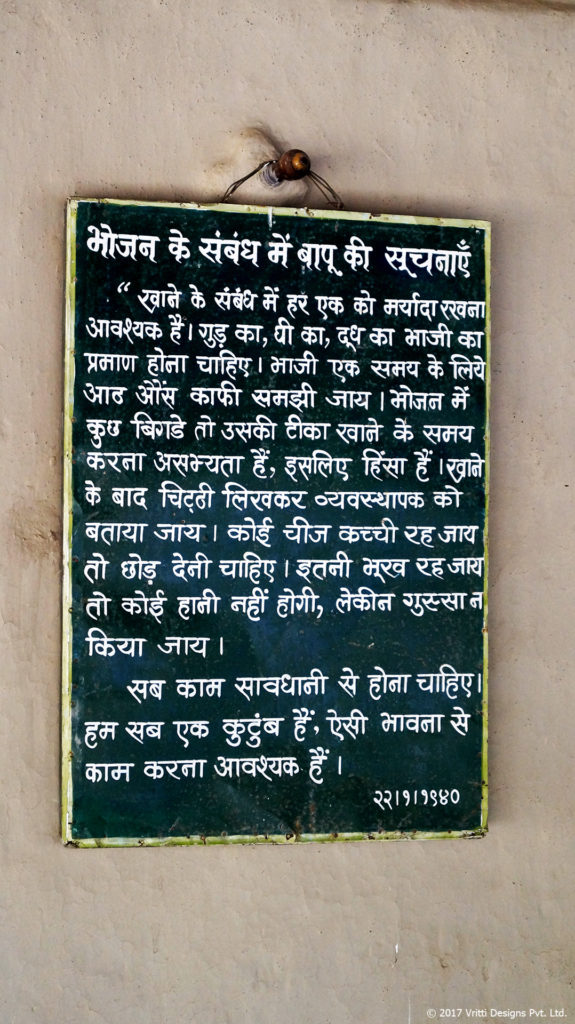
Bapu had a very interesting policy regarding food. He strictly instructs to avoid the criticism of the cooks while eating. He also instructs to exercise the limit over the use of substances like jaggery, ghee and milk. He always advocated the thought ‘too much of anything is bad’. He also instructs to inculcate a habit of taking food only as much as it is required. He believed that wastage of food is one of the most grave sins a man can so easily commit.
THE EVER-LASTING BOND:
The Ba Kuti was created because Gandhi ji was a staunch follower of chastity. At the Adi Nivas, Ba had to live with alongside many men. This led to the birth of Ba Kuti. Any women who came to see Gandhi ji stayed along with Ba at her kuti.
For any person, the better half is one of the most important people in the entire world. Ba and Bapu were no different. Like Bapu, Ba too created and wore clothes made out of hand spun yarn and handloom cotton. She was equally active in the independence struggle. She stood by her husband at all times.
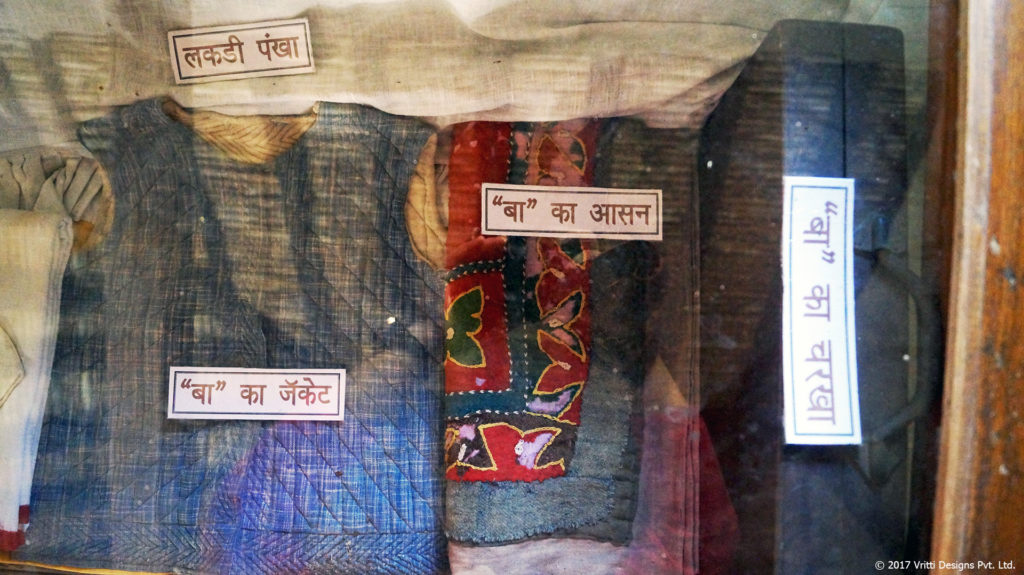
However, when the father had to choose between his children and his wife, he chose his children. In a heartfelt letter written by Mohan to his beloved Kasturba, the entire relationship between the two can be witnessed. Right from being tender kids being forced to marry to being soulmates to each other and understanding each other’s struggles, Bapu and Ba were always together.
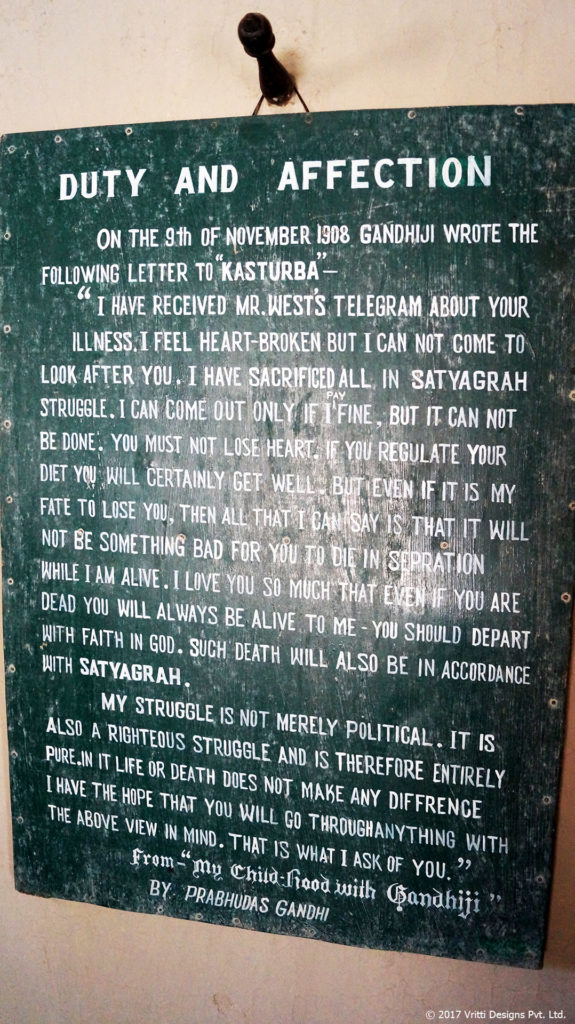
BAHURUPI GANDHI:
If all of the above faces and forms of Gandhi weren’t already enough, he was also an ardent observer of dignity of labor. His many faces and forms ranged from being a dhobi (washerman), darji (taylor), bhangi (sweeper), rasoiya (cook), sampaadak (editor), bekah (writer), mocha (cobbler), bunkar (weaver) and bhikhari (the one who asks for alms).
He believed that to become an independent nation, we first have to become independent individuals. He never shied away from any menial job that come his way. He even cleaned the septic tank installed at Sevagram himself. Thus, he showed the true meaning of dignity of labor to the entire world.

While there is no second thought about Gandhi’s philosophy and principle being true and practical in every sense, people still shy away from enacting and enforcing them. India as a nation has been blessed by the birth of a man idolized by people from so many countries. The greatness of the man was recognized by the United Nations by declaring 2nd October, his birthday as the ‘International Day of Non Violence’.
We at Vritti Designs are trying our best to bring about the philosophies of Gandhi back to the lives of the people. And we urge for your support. Minimalism, fair trade practices, organic living and swadeshi are the pillars that carry the weight of Vritti. So on this Gandhi Jayanti, in the memory of one of the greatest man to have graced the planet, let us all try our best to get a little bit closer to the many-faced, many-formed, bahurupi Mahatma!
Have a look at Life Sequence of Mahatama Gandhi below !!
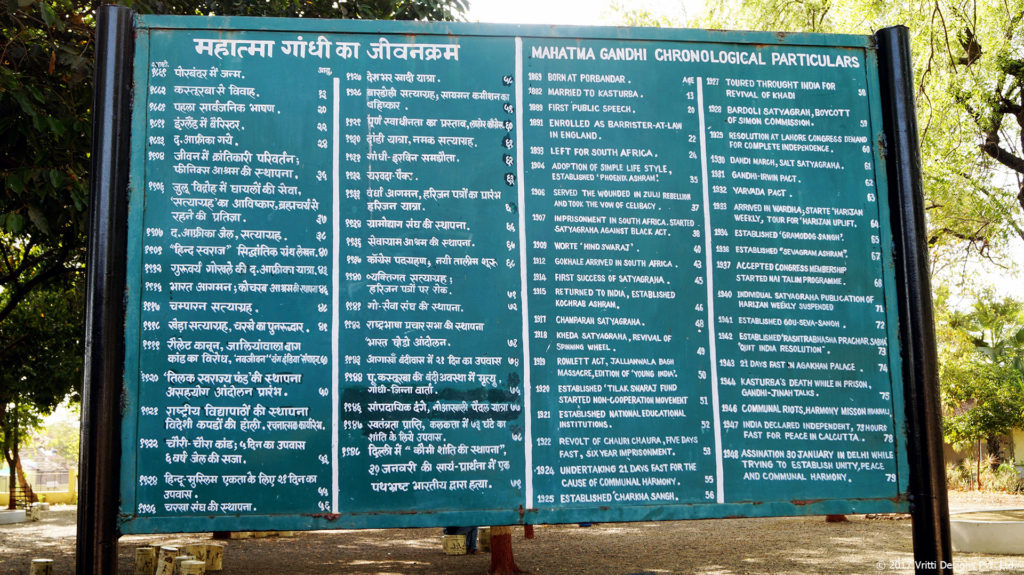
Thank you so much for reading and please spread a word about it by sharing it with others .
Lets promote Swadeshi and organic living by shopping handloom clothes. Thanks
Vritti Designs Team


